What is a locknut and how to use it?
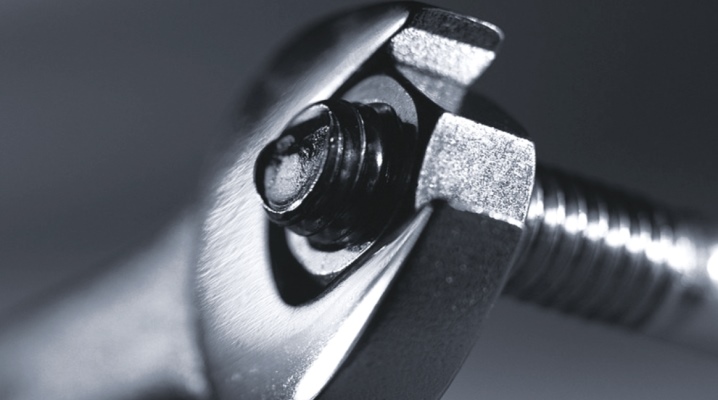
A locknut can be considered to be any nut screwed on top of an already installed one. She stops or, as they say, counters the first, preventing her from twisting, for which she received the corresponding name. Such a part prevents the connections from loosening due to the friction that occurs between the nuts, and it is used where vibration of the assemblies is possible, especially in cases of significant movement along the bolt. There are two ways to install such products - before or after the main nut. In the first case, it takes on a part of the mechanical stress, and in the second it redistributes the load evenly.
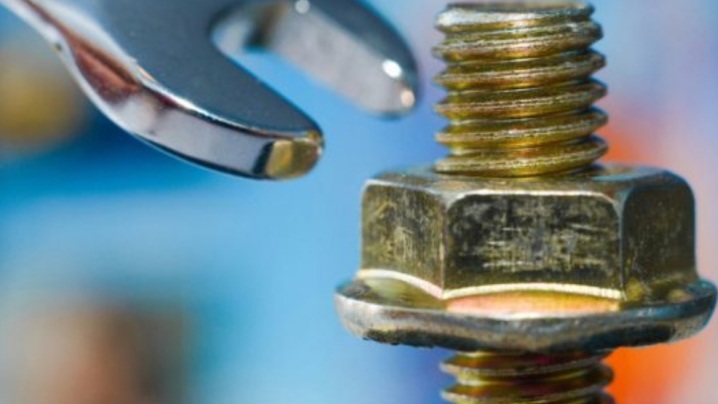
What is it and what is it for?
Many are interested in what a locknut is and what is the principle of operation of this device. This is a very simple fixture, and any nut that acts as a stopper can fulfill its function. During installation, two nuts are screwed onto one unit, which prevents self-unscrewing of parts under conditions of constant vibrations, other loads, or if you need a stepless fixation.
The special product is thinner, which means that production is cheaper. They are made from different materials, similar products have differences in the thread pitch, differ in the number of threads. Parts can be tapered and have slots. Their differences are determined by GOST. Such products are easy to select in accordance with the characteristics of the connection, as well as the environment that affects it.
The use of locknuts is a simple and effective operation that reliably fixes vibrating joints of assemblies from spontaneous unwinding. But there are certain drawbacks, when tightening the lock nut, the dimensions of the connection increase, while the structure becomes cumbersome and heavier.
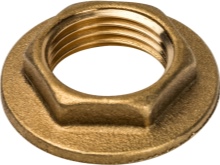
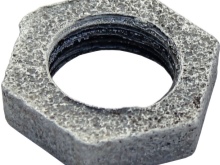
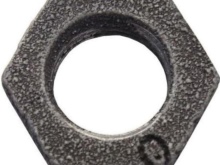
Areas of use
If plumbing, heating, plumbing requires repair, it is difficult to do without locknuts. It is necessary when performing such work:
- repair of pipelines;
- sealing of connections;
- replacement of fittings and valves;
- installation of heating radiators.
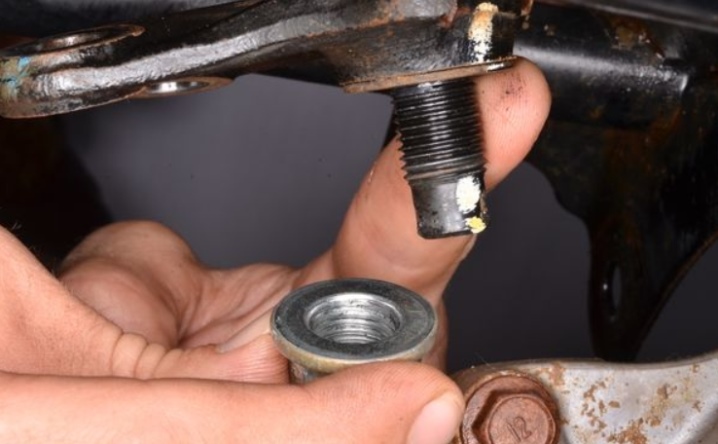
For example, when repairing heating, the algorithm of actions will be as follows.
- First, a lock nut is screwed onto the threaded squeegee.
- Then the coupling or ball lock is screwed into the radiator cap.
- After that, unscrew the lock nut.
- It is used to seal the connection with the coupling or tap.
For a similar purpose, use this part when installing the filter and for the mixer. In these works, sealants are usually used in the form of sanitary flax, FUM tape, Teflon thread or other materials.

What are they?
Externally, the locknuts resemble a regular nut. It is a hexagon with a hole in which the thread is cut. With an internal thread, the locknut is considered to be cylindrical. If the thread is external, then the part is tapered. For example, a plumbing model has a cylindrical thread. It is usually installed before the main one. This leads to thread pulling and stress redistribution. This work prevents leaking connections.
Flanged plumbing locknuts provide even greater tightness. Such a connection is much stronger and looks more aesthetically pleasing. In this case, the flange is more tightly articulated with the edges of the joint.

Such products are made in several ways:
- cutting from a hex with a lathe;
- stamping from a sheet of metal;
- by casting.
A more economical option is stamped products.Die-cast models are considered to be of the highest quality. They make hardware from different materials. Most of them are made from steel. The part can be black or electroplated, and it can also be galvanized or stainless. In addition, it can be:
- steel;
- brass;
- aluminum:
- from alloys based on brass;
- copper;
- titanium;
- cast iron.
This diversity is due to the purpose and different conditions of the application environment. For a non-aggressive environment, cast iron is usually used. In the event that the environment is aggressive, it is advisable to use brass. Such a system will last much longer due to its increased anti-corrosion resistance.

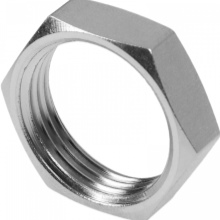

Dimensions (edit)
Given the frequent use of these products and their wide range of applications, they can be of different sizes. Their parameters must correspond to the diameter of the pipe and the type of connection elements:
- for thin pipes the following dimensions are applicable: DN 6, 8, 10 mm;
- more in demand are average diameters of 15 mm (1/2 "), 20 mm (3/4"), 25 mm;
- for gas pipelines and pipelines, the following models are suitable: 32 mm 40, 50 and 65 mm.
When choosing a product of the desired inch, you need to take into account the size of the nut thread, otherwise the effect will be minimal. They are made from different materials according to different guests and differ in the peculiarities of the carving. The lock nut GOST 8968-75 can be galvanized and non-galvanized, starting from 8 mm (M8) and ending with 100 mm.
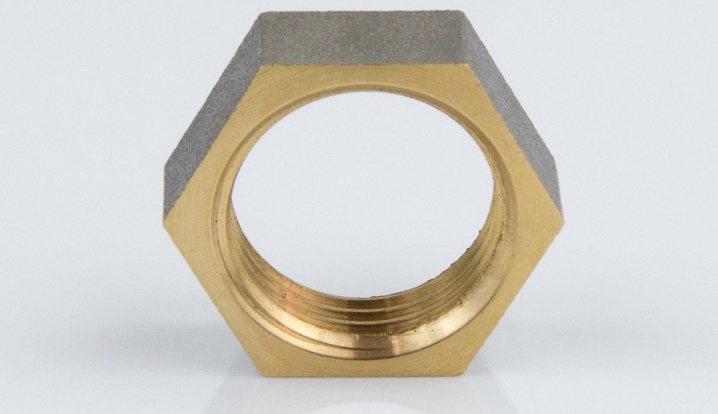
Operating tips
Correct installation of connection units must be carried out in compliance with a number of requirements.
- The tightening torque of the screw and nut must be full, this will prevent the possibility of self-loosening of the connections.
- Correct seating of the articulated parts must be free from distortions and distortions.
- If the connection is to be tight, deformable gaskets must be used.
- The parts are tightened with a uniform, moderate effort, using torque wrenches.
- The tightening force is controlled by the length of the connection or the angle of rotation of the key.
- When it is necessary to tighten the lock nut, it is necessary to ensure that its movement along the threaded connection to the clamping point is free.
- If the nut loosens during installation, it means that its thread does not correspond to the required dimensions and may break during operation. To prevent this from happening, it must be removed and replaced.
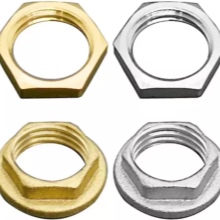

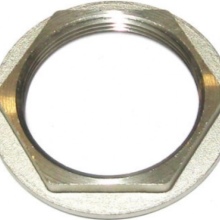
The installation of the nut begins with pre-tightening. Then the whole assembly is assembled. Then the locknut must be unscrewed and tightened with a force of 2/3 of the full tension until it is connected to the main parts and the nut. Only then can it be tightened to the full design angle of rotation. When working with small diameter products, you need to use short service keys, using one hand and applying an effort equal to 30 kilograms.
To work with a large diameter, it is suggested to use long keys and rotate them with both hands, applying an effort of about 50 kg, while lengthening the lever is not advised.
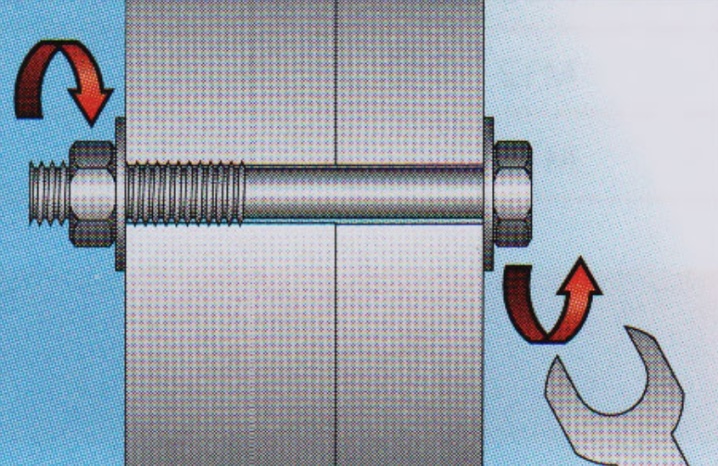
The next video explains how to choose a locknut.













The comment was sent successfully.